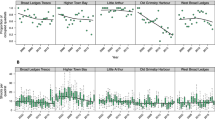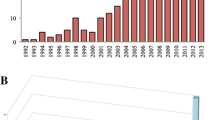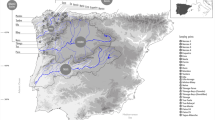Abstract
Although genomic diversity is increasingly recognised as a key component of biodiversity, it is seldom used to inform conservation planning. Estuaries and keystone species such as the seagrass, Zostera capensis, are under severe anthropogenic pressure and are often poorly protected. In this study we integrated Single Nucleotide Polymorphism data generated from populations of Z. capensis across the South African coastline into the spatial prioritisation tool Marxan. We included different measures of genomic variation to account for genomic diversity, distinctness and evolutionary potential to explore spatial planning scenarios. We investigated how conservation priority areas identified by targeting only habitat type differed from those identified by also including genomic measures; further we assessed how different genetic diversity metrics change prioritisation outcomes. All scenarios targeting genomic variation identified unique conservation prioritisation areas compared to scenarios only targeting habitat type. As such, omitting these estuaries from regional Marine Protected Areas networks risks the loss of evolutionarily important populations, threatening resilience and persistence of associated estuarine communities and their ecosystem services. We also observed a high degree of overlap between prioritisation outcomes across targeted measures of genomic variation. As such, by including even single measures of genomic variation, it may be possible to sufficiently represent the evolutionary processes behind the patterns of variation, while simplifying the conservation prioritisation procedure.





Similar content being viewed by others
Data Availability
Genomic data used in this study is available through these repositories: NCBI (PRJNA503110); GeOMe project: Zostera capensis pooled RADseq; GitHub: https://github.com/vonderHeydenLab/Zostera-capensis-genomics.
Code availability
All R scripts are available at https://github.com/vonderHeydenLab/Zostera-capensis-genomics.
References
Adams JB (2016) Distribution and status of Zostera capensis in South African estuaries—a review. South African J Bot 107:63–73. https://doi.org/10.1016/j.sajb.2016.07.007
Allendorf FW, Hohenlohe PA, Luikart G (2010) Genomics and the future of conservation genetics. Nat Rev Genet 11:697–709. https://doi.org/10.1038/nrg2844
Antao T, Lopes A, Lopes RJ, Beja-Pereira A, Luikart G (2008) LOSITAN: a workbench to detect molecular adaptation based on a F ST-outlier method. BMC Bioinformatics 9:1–5. https://doi.org/10.1186/1471-2105-9-323
Anthonysamy WJB, Dreslik MJ, Douglas MR et al (2018) Population genetic evaluations within a co-distributed taxonomic group: a multi-species approach to conservation planning. Anim Conserv 21:137–147. https://doi.org/10.1111/acv.12365
Ball IR, Possingham HP, Watts ME (2009) Marxan and relatives: software for spatial conservation prioritization. Spatial conservation prioritization: quantitative methods and computational tools. Oxford University Press, Oxford, pp 185–195
Beger M, Selkoe KA, Treml E et al (2014) Evolving coral reef conservation with genetic information. Bull Mar Sci 90:1–28. https://doi.org/10.5343/bms.2012.1106
Benestan L, Ferchaud A-L, Hohenlohe P et al (2016) Conservation genomics of natural and managed populations: building a conceptual and practical framework. Mol Ecol. https://doi.org/10.1111/mec.13647
Bertelli CM, Unsworth RK (2014) Protecting the hand that feeds us: Seagrass (Zostera marina) serves as commercial juvenile fish habitat. Mar Pollut Bull 83:425–429. https://doi.org/10.1016/j.marpolbul.2013.08.011
Bible JM, Sanford E (2016) Local adaptation in an estuarine foundation species: implications for restoration. BIOC 193:95–102. https://doi.org/10.1016/j.biocon.2015.11.015
Carvalho SB, Velo-Antón G, Tarroso P et al (2017) Spatial conservation prioritization of biodiversity spanning the evolutionary continuum. Nat Ecol Evol 1:0151. https://doi.org/10.1038/s41559-017-0151
Christe C, Stolting KN, Paris M, Fraïsse C, Bierne N, Lexer C (2017) Adaptive evolution and segregating load contribute to the genomic landscape of divergence in two tree species connected by episodic gene flow. Mol Ecol 26:59–76. https://doi.org/10.1111/mec.13765
Chust G, Albaina A, Aranburu A et al (2013) Connectivity, neutral theories and the assessment of species vulnerability to global change in temperate estuaries. Estuar Coast Shelf Sci 131:52–63. https://doi.org/10.1016/j.ecss.2013.08.005
De Villemereuil P, Gaggiotti OE (2015) A new FST-based method to uncover local adaptation using environmental variables. Methods Ecol Evol 6:1248–1258. https://doi.org/10.1111/2041-210X.12418
Diaz S, Fargione J, Chapin FS III et al (2006) Biodiversity loss threatens human well-being. Plos Biol 4:e277. https://doi.org/10.1371/journal.pbio.0040277
Diniz-Filho JAF, de Oliveira Ferraz Barbosa AC, Chaves LJ et al (2018) Overcoming the worst of both worlds: integrating climate change and habitat loss into spatial conservation planning of genetic diversity in the Brazilian Cerrado. Biodivers Conserv. https://doi.org/10.1007/s10531-018-1667-y
Edgar GJ, Stuart-Smith RD, Willis TJ et al (2014) Global conservation outcomes depend on marine protected areas with five key features. Nature 506:216–220. https://doi.org/10.1038/nature13022
Evans SM, Sinclair EA, Poore AGB et al (2017a) Assessing the effect of genetic diversity on the early establishment of the threatened seagrass Posidonia australis using a reciprocal-transplant experiment. Restor Ecol 26:1–11. https://doi.org/10.1111/rec.12595
Evans SM, Vergés A, Poore AGB, Gallagher F (2017b) Genotypic diversity and short-term response to shading stress in a threatened seagrass: does low diversity mean low resilience ? Front Plant Sci 8:1–11. https://doi.org/10.3389/fpls.2017.01417
Foll M, Gaggiotti O (2008) A genome-scan method to identify selected loci appropriate for both dominant and codominant markers: a Bayesian perspective. Genetics 180:977–993. https://doi.org/10.1534/genetics.108.092221
Gaither MR, Gkafas GA, de Jong M et al (2018) Genomics of habitat choice and adaptive evolution in a deep-sea fish. Nat Ecol Evol 2:1–8. https://doi.org/10.1038/s41559-018-0482-x
Gedeon CI, Hoffmann IE, Váczi O et al (2017) The role of landscape history in determining allelic richness of European ground squirrels (Spermophilus citellus) in Central Europe. Hystrix 28:240–246. https://doi.org/10.4404/hystrix-28.2-11823
Grech A, Hanert E, Mckenzie L et al (2018) Predicting the cumulative effect of multiple disturbances on seagrass connectivity. Glob Chang Biol 24:3093–3104. https://doi.org/10.1111/gcb.14127
Guo B, DeFaveri J, Sotelo G, Nair A, Merilä J (2015) Population genomic evidence for adaptive differentiation in Baltic Sea three-spined sticklebacks. BMC Biol 13:19. https://doi.org/10.1186/s12915-015-0130-8
Harris LR, Watts ME, Nel R et al (2014) Using multivariate statistics to explore trade-offs among spatial planning scenarios. J Appl Ecol 51:1504–1514. https://doi.org/10.1111/1365-2664.12345
Hoban S (2018) Integrative conservation genetics: prioritizing populations using climate predictions, adaptive potential and habitat connectivity. Mol Ecol Resour 18:14–17. https://doi.org/10.1111/1755-0998.12752
Hoban S, Arntzen JA, Bruford MW et al (2014) Comparative evaluation of potential indicators and temporal sampling protocols for monitoring genetic erosion. Evol Appl 7:984–998. https://doi.org/10.1111/eva.12197
Hoban S, Bruford M, Jackson JD et al (2020) Genetic diversity targets and indicators in the CBD post-2020 Global Biodiversity Framework must be improved. Biol Conserv 1:108654. https://doi.org/10.1016/j.biocon.2020.108654
Hohenlohe PA, Bernatchez L, Funk WC, Catchen JM (2017) Unbroken : RADseq remains a powerful tool for understanding the genetics of adaptation in natural populations. 362–365. https://doi.org/https://doi.org/10.1111/1755-0998.12669
Hughes AR, Williams SL, Duarte CM et al (2009) Associations of concern: declining seagrasses and threatened dependent species. Front Ecol Environ 7:242–246. https://doi.org/10.1890/080041
Human LR, Adams JB, Allanson BR (2016) Insights into the cause of an Ulva lactuca Linnaeus bloom in the Knysna Estuary. S Afr J Bot 107:55–62. https://doi.org/10.1016/j.sajb.2016.05.016
Jackson EL, Rees SE, Wilding C et al (2015) Use of a seagrass residency index to apportion commercial fishery landing values and recreation fisheries expenditure to seagrass habitat service. Cons Biol 29:899–909. https://doi.org/10.1111/cobi.12436
Jahnke M, Gullstrom M, Larsson J, Asplund ME, Mgeleka S, Silas MO, Hoamby A, Mahafina J, Nordlund LM (2019) Population genetic structure and connectivity of the seagrass Thalassia hemprichii in the Western Indian Ocean is influenced by predominant ocean currents. Ecol Evol 9:8953–8964. https://doi.org/10.1002/ece3.5420
Jahnke M, Olsen JL, Procaccini G (2015) A meta-analysis reveals a positive correlation between genetic diversity metrics and environmental status in the long-lived seagrass Posidonia oceanica. Mol Ecol 24:2336–2348. https://doi.org/10.1111/mec.13174
Keenan K, McGinnity P, Cross TF, Crozier WW, Prodöhl PA (2013) diveRsity: an R package for the estimation and exploration of population genetics parameters and their associated errors. Methods Ecol Evol 4:782–788. https://doi.org/10.1111/2041-210X.12067
Knapp I, Puritz J, Bird C et al (2016) ezRAD-an accessible next-generation RAD sequencing protocol suitable for non-model organisms v3. 1
Kofler R, Orozco-terWengel P, De Maio N, Pandey RV, Nolte V, Futschik A, Kosiol C, Schlötterer C (2011a) PoPoolation: a toolbox for population genetic analysis of next generation sequencing data from pooled individuals. PLoS ONE 6:e15925. https://doi.org/10.1371/journal.pone.0015925
Kofler R, Pandey RV, Schlötterer C (2011b) PoPoolation2: identifying differentiation between populations using sequencing of pooled DNA samples (Pool-Seq). Bioinformatics 27:3435–3436. https://doi.org/10.1093/bioinformatics/btr589
Kofler R, Nolte V, Schlötterer C (2016) The impact of library preparation protocols on the consistency of allele frequency estimates in Pool-Seq data. Mol Ecol Resour 16:118–122. https://doi.org/10.1111/1755-0998.12432
Kujala H, Burgman MA, Moilanen A (2013) Treatment of uncertainty in conservation under climate change. Conserv Lett 6:73–85
Laikre L, Hoban S, Bruford MW et al (2020) Post-2020 goals overlook genetic diversity. Science 6:1083–1085. https://doi.org/10.1126/science.abb2748
Little S, Spencer KL, Schuttelaars HM et al (2017) Unbounded boundaries and shifting baselines: estuaries and coastal seas in a rapidly changing world. Estuar Coast Shelf Sci 198:311–319. https://doi.org/10.1016/J.ECSS.2017.10.010
Lowry DB, Hoban S, Kelley JL et al (2017a) Responsible RAD: striving for best practices in population genomic studies of adaptation. Mol Ecol Resour 17:366–369. https://doi.org/10.1111/1755-0998.12677
Lowry DB, Hoban S, Kelley JL et al (2017b) Breaking RAD: an evaluation of the utility of restriction site-associated DNA sequencing for genome scans of adaptation. Mol Ecol Resour 17:142–152. https://doi.org/10.1111/1755-0998.12635
Luu K, Bazin E, Blum MG (2017) pcadapt: an R package to perform genome scans for selection based on principal component analysis. Mol Ecol Resour 17:67–77. https://doi.org/10.1111/1755-0998.12592
Margules CR, Pressey RL (2000) Systematic conservation planning. Nature 405:243–253. https://doi.org/10.1038/35012251
Massa SI, Paulino CM, Serrão EA, Duarte CM, Arnaud-Haond S (2013) Entangled effects of allelic and clonal (genotypic) richness in the resistance and resilience of experimental populations of the seagrass Zostera noltii to diatom invasion. BMC Ecol 13:39. https://doi.org/10.1186/1472-6785-13-39
McMahon BJ, Teeling EC, Höglund J (2014) How and why should we implement genomics into conservation? Evol Appl 7:999–1007. https://doi.org/10.1111/eva.12193
Mcmahon K, Hernawan U, Dawkins K, et al (2017) Population genetic diversity, structure and connectivity of two seagrass species, Thalassia hemprichii and Halophila ovalis in the Kimberley. Rep Proj 1:46
Mead A, Griffiths C, Branch G et al (2013) Human-mediated drivers of change—impacts on coastal ecosystems and marine biota of South Africa. African J Mar Sci 35:403–425
Mittell EA, Nakagawa S, Hadfield JD (2015) Are molecular markers useful predictors of adaptive potential? Ecol Lett 18:772–778. https://doi.org/10.1111/ele.12454
Nielsen ES, Beger M, Henriques R et al (2017) Multispecies genetic objectives in spatial conservation planning. Conserv Biol 31:872–882. https://doi.org/10.1111/cobi.12875
Nielsen ES, Beger M, Henriques R, von der Heyden S (2020) A comparison of genetic and genomic approaches to represent evolutionary potential in conservation planning. Biol Cons 251:108770. https://doi.org/10.1016/j.biocon.2020.108770
Nielsen EE, Hemmer-Hansen J, Larsen PF, Bekkevold D (2009) Population genomics of marine fishes: identifying adaptive variation in space and time. Mol Ecol 18:3128–3150. https://doi.org/10.1111/j.1365-294X.2009.04272.x
Nielsen ES, Henriques R, Toonen RJ et al (2018) Complex signatures of genomic variation of two non-model marine species in a homogeneous environment. BMC Genomics 19:1–16. https://doi.org/10.1186/s12864-018-4721-y
Oliver TH, Heard MS, Isaac NJ, Roy DB, Procter D, Eigenbrod F, Freckleton R, Hector A, Orme CD, Petchey OL, Proença V (2015) Biodiversity and resilience of ecosystem functions. Trends Ecol Evol 30:673–684. https://doi.org/10.1016/j.tree.2015.08.009
Paz-Vinas I, Loot G, Hermoso V et al (2018) the Systematic conservation planning for intraspecific genetic diversity. Proc R Soc B. https://doi.org/10.1101/105544
Pearse DE (2016) Saving the spandrels? Adaptive genomic variation in conservation and fisheries management. J Fish Biol 89:2697–2716. https://doi.org/10.1111/jfb.13168
Phair NL, Toonen RJ, Knapp I, von der Heyden S (2019) Shared genomic outliers across two divergent population clusters of a highly threatened seagrass. PeerJ 7:e6806. https://doi.org/10.7717/peerj.6806
Phair NL, Toonen RJ, Knapp ISS, von der Heyden S (2020) Anthropogenic pressures negatively impact genomic diversity of the vulnerable seagrass Zostera capensis. J Environ Manage 255:109831. https://doi.org/10.1016/j.jenvman.2019.109831
Razgour O, Taggart JB, Manel S et al (2018) An integrated framework to identify wildlife populations under threat from climate change. Mol Ecol Resour 18:18–31. https://doi.org/10.1111/1755-0998.12694
Reitzel AM, Herrera S, Layden MJ et al (2013) Going where traditional markers have not gone before: utility of and promise for RAD sequencing in marine invertebrate phylogeography and population genomics. Mol Ecol 11:2953–2970. https://doi.org/10.1016/j.biotechadv.2011.08.021.Secreted
Rellstab C, Fischer MC, Zoller S, Graf R, Tedder A, Shimizu KK, Widmer A, Holderegger R, Gugerli F (2017) Local adaptation (mostly) remains local: reassessing environmental associations of climate-related candidate SNPs in Arabidopsis. Heredity 118:193–201. https://doi.org/10.1038/hdy.2016.82
Rey O, Danchin E, Mirouze M et al (2016) Adaptation to global change: a transposable element-epigenetics perspective. Trends Ecol Evol 31:514–526. https://doi.org/10.1016/j.tree.2016.03.013
Richardson JL, Brady SP, Wang IJ, Spear SF (2016) Navigating the pitfalls and promise of landscape genetics. Mol Ecol 25:849–863. https://doi.org/10.1111/mec.13527
Rodriguez-Ezpeleta N, Álvarez P, Irigoien X (2017) Genetic diversity and connectivity in Maurolicus muelleri in the Bay of Biscay inferred from thousands of SNP markers. Front Genet 8:1–8. https://doi.org/10.3389/fgene.2017.00195
Schwartz MK, Luikart G, Waples RS (2007) Genetic monitoring as a promising tool for conservation and management. Trends Ecol Evol 22:25–33. https://doi.org/10.1016/j.tree.2006.08.009
Sgrò CM, Lowe AJ, Hoffmann AA (2011) Building evolutionary resilience for conserving biodiversity under climate change. Evol Appl 4:326–337. https://doi.org/10.1111/j.1752-4571.2010.00157.x
Short FT, Coles R, Waycott M, et al (2010) Zostera capensis. The IUCN red list of threatened species 2010: e.T173370A7001305. https://doi.org/10.2305/IUCN.UK.2010-3.RLTS.T173370A7001305.en. Downloaded on 20 February 2021.
Simberloff D (1998) Flagships, umbrellas, and keystones: is single-species management passe in the landscape era? Biol Conserv 83:247–257. https://doi.org/10.1016/S0006-3207(97)00081-5
Skowno AL, Poole CJ, Raimondo DC et al. (2019) National Biodiversity Assessment 2018: the status of South Africa’s ecosystems and biodiversity—synthesis report
Sork VL, Davis FW, Grivet D (2009) Incorporating genetic information into conservation planning for California Valley. Proceedings 6th Symp Oak Woodlands California’s Oaks today’s challenges, tomorrow’s. Oppor pp 497–509
Timpane-Padgham BL, Beechie T, Klinger T (2017) A systematic review of ecological attributes that confer resilience to climate change in environmental restoration. PLoS ONE 12:1–23. https://doi.org/10.1371/journal.pone.0173812
Toonen RJ, Puritz JB, Forsman ZH et al (2013) ezRAD: a simplified method for genomic genotyping in non-model organisms. PeerJ 1:e203. https://doi.org/10.7717/peerj.203
Vandergast AG, Perry WM, Lugo RV et al (2011) Genetic landscapes GIS toolbox: tools to map patterns of genetic diversity and diversity. Mol Ecol Res 11:158–161. https://doi.org/10.1111/j.1755-0998.2010.02904.x
van Niekerk L, Adams JB, Lamberth SJ et al (2018) South African National Biodiversity Assessment 2018: Technical Report, vol 3. Estuarine Realm, Pretoria
Van Niekerk L, Turpie J, (eds) (2012) National biodiversity assessment 2011, Vol 3 Estuary component technical report
von der Heyden S (2009) Why do we need to integrate population genetics into South African marine protected area planning? African J Mar Sci 31:263–269. https://doi.org/10.2989/AJMS.2009.31.2.14.886
von der Heyden S (2017) Making evolutionary history count: biodiversity planning for coral reef fishes and the conservation of evolutionary processes. Coral Reefs 36:183–194. https://doi.org/10.1007/s00338-016-1512-2
von der Heyden S, Beger M, Toonen RJ et al (2014) The application of genetics to marine management and conservation: examples from the Indo-Pacific. Bull Mar Sci 90:1–36. https://doi.org/10.5343/bms.2012.1079
Xuereb A, Kimber CM, Curtis JM, Bernatchez L, Fortin MJ (2018) Putatively adaptive genetic variation in the giant California sea cucumber (Parastichopus californicus) as revealed by environmental association analysis of restriction-site associated DNA sequencing data. Mol Ecol 27:5035–5048
Funding
This study was funded by the National Research Foundation through a Scarce Skills Doctoral Scholarship to Nikki Phair and the Western Indian Ocean Marine Sciences Association through the MARG I grant to Sophie von der Heyden.
Author information
Authors and Affiliations
Contributions
NP and SvdH conceived the study; NP generated and analysed data; NP wrote first draft; NP, EN and SvdH contributed to editing and writing of the drafts.
Corresponding author
Ethics declarations
Conflict of interest
We declare that there are no conflict of interests.
Additional information
Communicated by Daniel Sanchez Mata.
Publisher's Note
Springer Nature remains neutral with regard to jurisdictional claims in published maps and institutional affiliations.
Rights and permissions
About this article
Cite this article
Phair, N.L., Nielsen, E.S. & von der Heyden, S. Applying genomic data to seagrass conservation. Biodivers Conserv 30, 2079–2096 (2021). https://doi.org/10.1007/s10531-021-02184-w
Received:
Revised:
Accepted:
Published:
Issue Date:
DOI: https://doi.org/10.1007/s10531-021-02184-w




